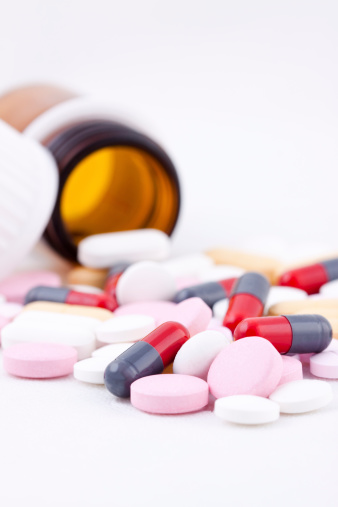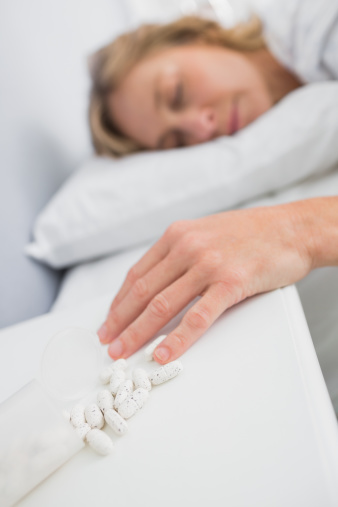Agencies Respond to Rampant Prescription-Related Deaths
Several public health agencies have collaborated on an institutional response to the alarmingly high rate of prescription overdose-related deaths around the country. One of the key components of the response was the expanded use of medication to treat prescription drug addiction, both during treatment and in its overdoses stages.
The commentary was drafted by representatives from the National Institute on Drug Abuse (NIDA), National Institutes of Health (NIH), Centers for Disease Control and Prevention (CDC), Substance Abuse and Mental Health Services Administration (SAMHSA) and Centers for Medicate and Medicaid Services (CMS) and was published in a recent edition of the New England Journal of Medicine. Authors point to the effectiveness of drugs such as methadone, naltrexone and buprenorphine and their under-utilization in the clinical treatment of chemical dependency.
Medication-assisted treatment uses medications in concert with counseling and behavioral therapy to provide the highest possible level of recovery – focusing on the total patient.
“When prescribed and monitored properly, medications such as methadone, buprenorphine or naltrexone are safe and cost-effective components of opioid addiction treatment,†said NIDA director and lead author Nora D. Volkow, M.D. “These medications can improve lives and reduce the risk of overdose, yet medication-assisted therapies are markedly underutilized.â€
What Is Being Done?
The article also outlines how public health agencies are working together with various private and public partners to improve access to these medications and enhance utilization in an effort to curtail overdose-related fatalities. Some states have already mandated that their police forces carry Narcan to revive heroin overdose victims.
The goal of increasing medication-assisted therapy is to treat addiction before it results in an overdose situation. The CDC is working with states to implement a variety of treatment and prevention measures, including helping doctors identify addiction cases and developing more medication-assisted treatment programs in the areas that need them.
Medication-assisted treatment uses medications in concert with counseling and behavioral therapy to provide the highest possible level of recovery – focusing on the total patient.
Breaking Through the Misconceptions
Medications like methadone have been used in addiction therapy for several decades, but the authors of the article point to three main reasons why treatment services have been slow to utilize other medications in addiction therapy:
- Inadequate Provider Education
- Misunderstandings About Addiction Medications by the Public
- Misconceptions About Medication Assisted Therapy
One misperception that the authors say must be debunked is the thought that using medication to break addiction is replacing one addiction with another. This is a common belief that the authors argue is not backed by scientific evidence. SAMHSA addresses this in a publication titled, Medication-Assisted Treatment for Opioid Addiction:
“Taking medication for opioid addiction is like taking medication to control heart disease of diabetes. It is NOT the same as substituting one addictive drug for another. Used properly, the medication does NOT create a new addiction. It helps people manage their addiction so that the benefits of recovery can be maintained.â€[1]
The Case for Medication-Assisted Therapy
 According to SAMHSA, using medication allows an addict to regain a normal state of mind and regain some control over their thoughts and actions. It frees a person from obsessively thinking about drugs and/or alcohol all of the time, and allows them to focus on improving the many damaged aspects of their lives. It can reduce cravings and minimize withdrawal symptoms – all making recovery that much easier.
According to SAMHSA, using medication allows an addict to regain a normal state of mind and regain some control over their thoughts and actions. It frees a person from obsessively thinking about drugs and/or alcohol all of the time, and allows them to focus on improving the many damaged aspects of their lives. It can reduce cravings and minimize withdrawal symptoms – all making recovery that much easier.
Failure to recover from drug or alcohol addiction is frequently less about a person\’s will and determination, and more about their inability to successfully mitigate intense withdrawal symptoms and cravings. Allowing a patient to use responsibly administered medication in their addiction treatment may lead to a greater chance of success.
The NIH has unequivocally backed the efficacy of medication-assisted therapy, stating that “methadone maintenance coupled with relevant social, medical and psychological services has the highest probability of being the most effective of all available treatments for opioid addiction.â€[2]
What Makes a Good Candidate?
Not all addiction treatments have equal levels of efficacy on all people, and medication-assisted addiction therapy is no different. When an addict has decided they\’d like to try using a drug to break their prescription opioid addiction, it\’s important that his or her doctor ask a series of questions to determine whether medication is an appropriate addiction care strategy.
Factors such as a patient\’s mental health, their use of other drugs, the length of time of their addiction, and others are considered during this assessment.
Other Potential Questions Include
- Is the patient taking any other drugs?
- Does the patient drink alcohol?
- Is the patient suffering from any heart problems?
- Is the patient pregnant?
- Is the patient taking any other medications?
- Has the patient been in addiction treatment in the past?
- Has the patient ever experienced any negative reactions to medications?
- Does the patient have a strong family support system?
During this meeting, the patient should be educated on different treatment options available and the benefits of them all. The treatment plan the patient agrees to must cover their specific goals for treatment, the medical decision on which medication to take and at what dosage and plans for addiction counseling.
The Troubling U.S. Prescription Overdose Problem
Despite crackdowns on pill mills, the creation of prescription drug tracking, new drug formulas to prevent abuse and countless other measures, prescription drug abuse remains the leading cause of overdose deaths in America.  More than 16,000 (higher than cocaine and heroin combined) people die every year from a prescription opioid overdose. According to the CDC, more than two million Americans were dependent on prescription opioids in 2013, the latest available data.[3]
More than 16,000 (higher than cocaine and heroin combined) people die every year from a prescription opioid overdose. According to the CDC, more than two million Americans were dependent on prescription opioids in 2013, the latest available data.[3]
The 2013, there were approximately 1.5 million people aged 12 or older who used prescription opioids non-medically for the first time, according to SAMHSA. That\’s over 4,100 new users every day.[4]
The combination of America\’s problem with chronic pain, and prescription opioids being used recreationally has created an atmosphere of rampant abuse. On one side, individuals are struggling with debilitating pain and need medication to function without being dogged by pain. But this often leads to dependency and addiction.
Euphoric effects of opioids have also led to increases in recreational use. Many people of all ages are taking opioids just to get high, as opposed to for medical reasons. This also eventually leads to addiction, and often theft and other crime to supply the habit.
Medication Assisted Therapy is a BHOPB Offering
The addiction care specialists and medical experts at Behavioral Health of the Palm Beaches work very hard to remain leaders in the industry and to stay current with best practices. Our in-house research team has extensively studied the benefits of medication-assisted therapy and offer it to qualified patients in addiction rehab.
If you are interested in learning more about medication-assisted therapy and any specifics about our program in particular, please contact one of our professionals today.



